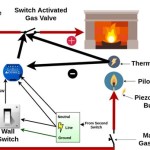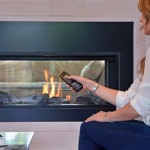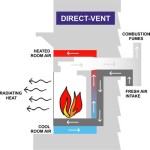```html
Slate Outdoor Fireplaces: A Comprehensive Guide
Outdoor fireplaces have become increasingly popular additions to patios, decks, and gardens, transforming outdoor spaces into warm and inviting environments for relaxation and entertainment. Among the various materials used in their construction, slate stands out for its durability, natural beauty, and versatility. Slate outdoor fireplaces offer a unique aesthetic that blends seamlessly with natural landscapes while providing a functional and attractive heat source.
This article will explore the defining characteristics of slate outdoor fireplaces, including the advantages they offer, considerations for design and installation, and maintenance requirements. Understanding these aspects is crucial for anyone considering incorporating a slate fireplace into their outdoor living area.
The Appeal and Advantages of Slate
Slate is a fine-grained, foliated metamorphic rock derived from shale-type sedimentary rock composed of clay or volcanic ash. Its inherent properties make it an excellent choice for outdoor applications, particularly in the construction of fireplaces. The appeal of slate rests on several key features.
Firstly, slate’s durability is a significant advantage. It is highly resistant to weathering, including freeze-thaw cycles, making it suitable for regions with harsh climates. Unlike some other natural stones, slate is relatively impermeable to water, reducing the risk of cracking and damage from moisture. This durability translates to a longer lifespan for the fireplace and reduced maintenance requirements over time.
Secondly, slate offers a distinctive aesthetic appeal. Its natural variations in color and texture create a unique and visually interesting surface. The stone can range in color from dark gray and black to shades of green, purple, and even red, depending on the mineral composition. These variations contribute to a natural, rustic look that complements various outdoor design styles. The texture of slate can also vary, from smooth and polished to rough and textured, allowing for customization based on individual preferences.
Thirdly, slate is a relatively eco-friendly material. It is a natural product that requires minimal processing compared to manufactured materials. It is also a recyclable material, although its durability often means that it remains in service for extended periods. Choosing slate for an outdoor fireplace can therefore contribute to a more sustainable approach to outdoor design.
Finally, slate's inherent fire resistance is paramount for fireplace construction. It withstands high temperatures without significant degradation, making it a safe and reliable choice for containing and radiating heat.
Design and Installation Considerations
Designing and installing a slate outdoor fireplace requires careful planning and attention to detail. Several factors need to be considered to ensure that the fireplace is both aesthetically pleasing and functionally sound. It is crucial to comply with local building codes and regulations regarding outdoor fireplaces, which may specify setbacks from property lines, minimum clearances from combustible materials, and requirements for chimneys or vents.
The design of the fireplace should complement the existing outdoor space. Consider the style of the house, the size of the patio or deck, and the overall landscape design. Slate can be incorporated into various fireplace designs, from simple, rectangular structures to more elaborate, custom-built features. The choice of slate color and texture should also be carefully considered to ensure that it harmonizes with the surrounding environment.
The size of the fireplace should be proportionate to the size of the outdoor space. A large fireplace might overwhelm a small patio, while a small fireplace might get lost in a large garden. Consider the intended use of the fireplace. If it is primarily for ambiance, a smaller fireplace might suffice. If it is intended to provide significant heat for outdoor gatherings, a larger fireplace might be necessary.
Proper foundation is essential for the stability and longevity of the fireplace. The foundation should be made of concrete and should extend below the frost line to prevent heaving and cracking during freeze-thaw cycles. The foundation should also be level and properly compacted to ensure that the fireplace is stable and doesn't shift over time.
The construction of the fireplace itself typically involves using slate stones mortared together. The mortar should be specifically formulated for outdoor applications and should be resistant to weathering and temperature fluctuations. The slate stones should be carefully arranged to create a visually appealing and structurally sound fireplace. Consider using different sizes and shapes of slate to add visual interest and texture. Ensuring proper drainage within the structure is also critical to prevent water accumulation and potential damage.
The chimney or vent is an important component of the fireplace, as it allows smoke and exhaust gases to escape safely. The chimney should be properly sized to ensure adequate draft and prevent smoke from blowing back into the outdoor space. The chimney should also be constructed of fire-resistant materials and should be properly sealed to prevent leaks.
Professional installation is highly recommended, especially for complex fireplace designs. A qualified mason or contractor can ensure that the fireplace is built to code and that it is structurally sound and safe to use.
Maintaining a Slate Outdoor Fireplace
While slate is a durable material, regular maintenance is necessary to keep a slate outdoor fireplace looking its best and to ensure its longevity. Proper maintenance involves cleaning, sealing, and periodic inspections.
Cleaning the fireplace regularly helps to remove soot, ash, and other debris that can accumulate on the slate surface. Use a soft brush or cloth and a mild detergent to clean the slate. Avoid using harsh chemicals or abrasive cleaners, as these can damage the slate surface.
Sealing the slate can help to protect it from water damage and staining. A good quality sealant will penetrate the slate and create a barrier that repels water and other liquids. The frequency of sealing will depend on the type of sealant used and the exposure of the fireplace to the elements. Consult the sealant manufacturer's instructions for recommended application and reapplication intervals.
Regularly inspect the fireplace for cracks, loose stones, or other signs of damage. Address any issues promptly to prevent them from escalating. Small cracks can be repaired with mortar, while loose stones may need to be reattached. If significant damage is detected, consult a qualified mason or contractor for repairs.
Ensure that the chimney or vent is clear of obstructions. Birds' nests, leaves, and other debris can block the chimney and prevent smoke from escaping properly. Regularly inspect the chimney and remove any obstructions as needed.
Finally, consider covering the fireplace during periods of prolonged inactivity, especially during the winter months. A waterproof cover can help to protect the slate from weathering and prevent water damage.
By following these maintenance tips, one can help to ensure that the slate outdoor fireplace remains a beautiful and functional addition to outdoor living space for years to come.
```
Five Fabulous Outdoor Fireplace Ideas Coogans Landscape Design

How To Build An Outdoor Stacked Stone Fireplace

Outdoor Brick Fireplace In The Woods Dining Slate Patio Seating Wall Entertaining Backyard Living

Slate Fireplaces River Rock And Outdoor Fireplace Surround Designs

Outdoor Stone Fireplace Landscaping Network

How To Build An Outdoor Fireplace Today S Creative Life

Slate Tile Outdoor Gas Fireplace Linear Modern

Outdoor Fireplace Sudbury Ma 3 Rustic Designs For Your Landscape Weel Inc

Stone Fireplace Merrifield Garden Center

Bristol Fireplace Cotswold Mist Brookstone Slate Bs Tp
Related Posts








